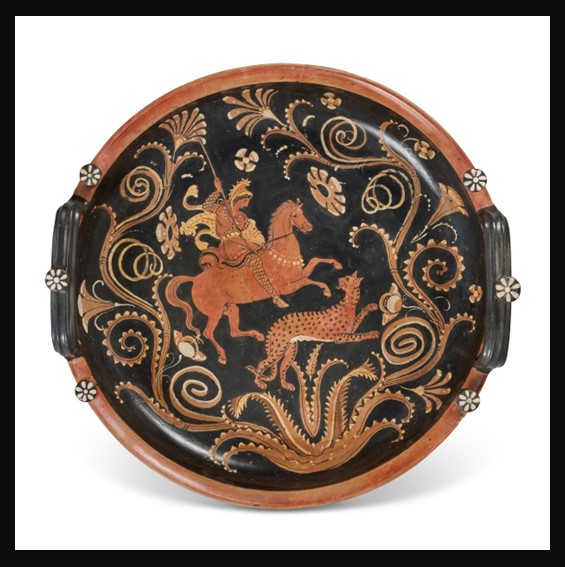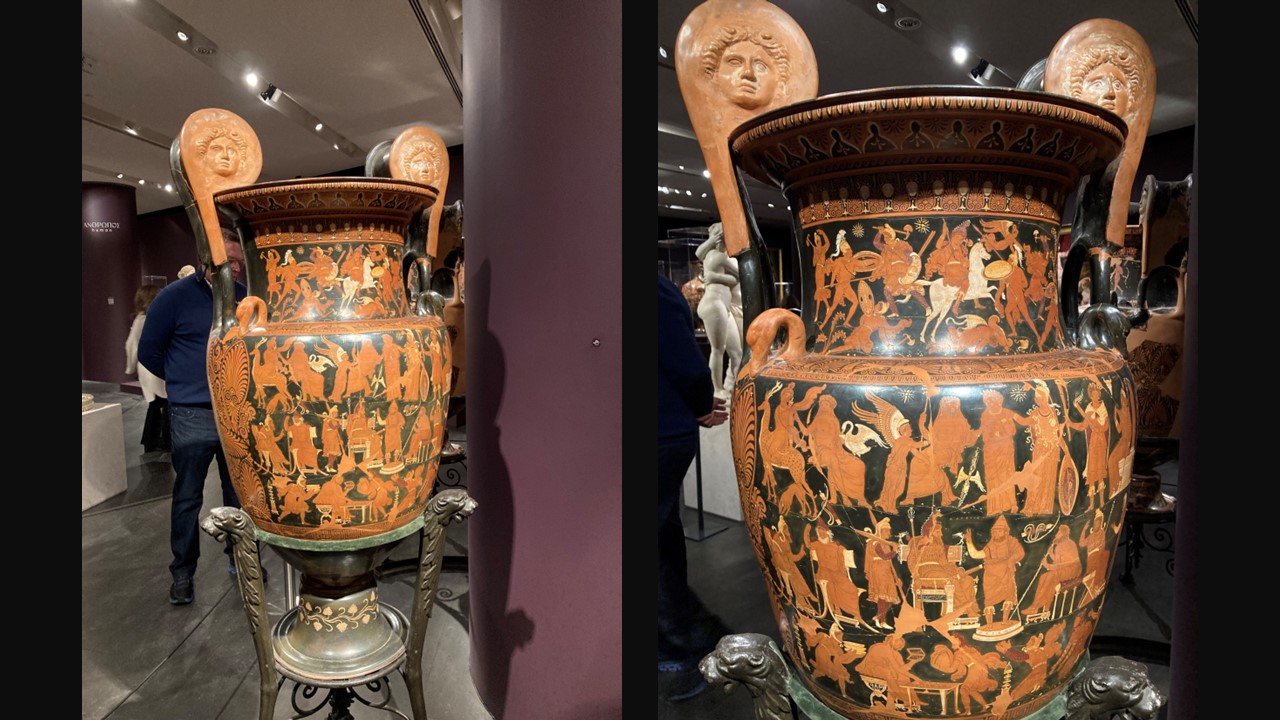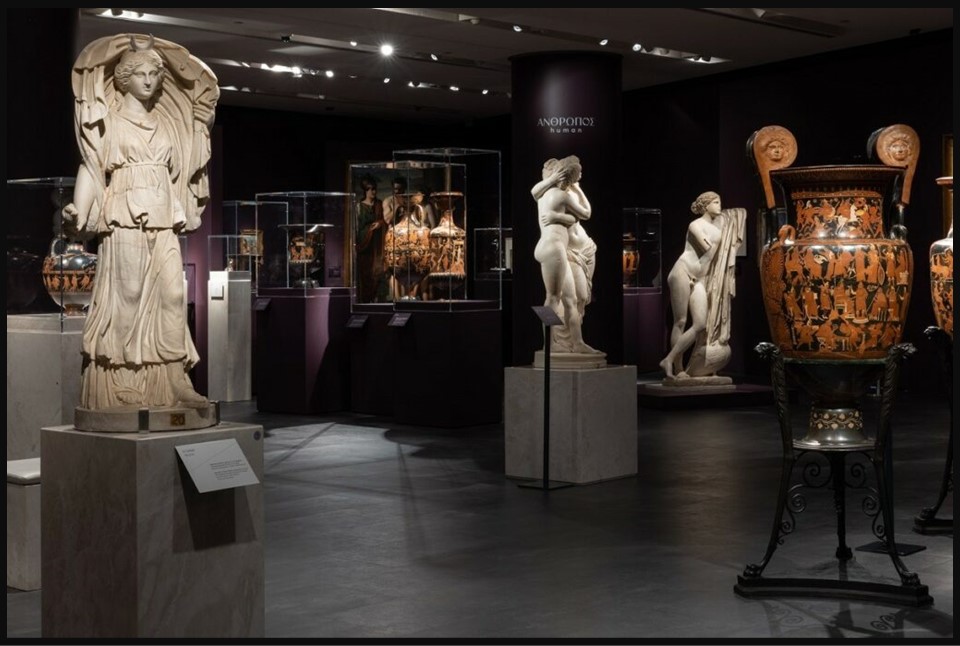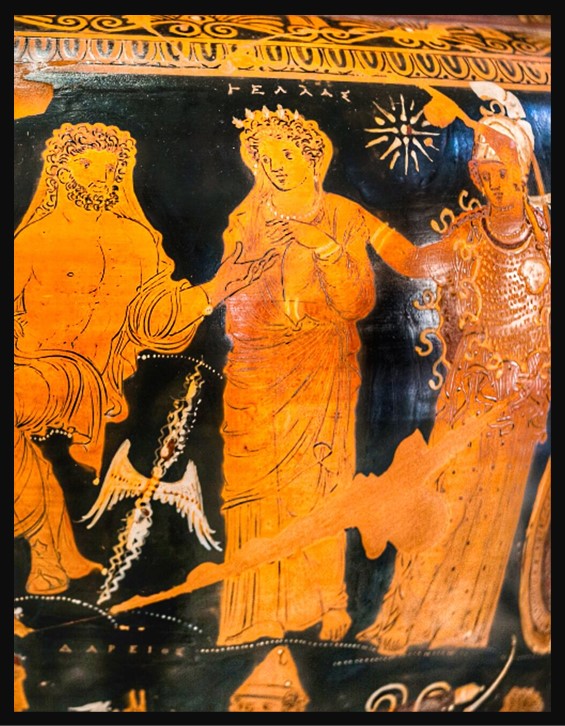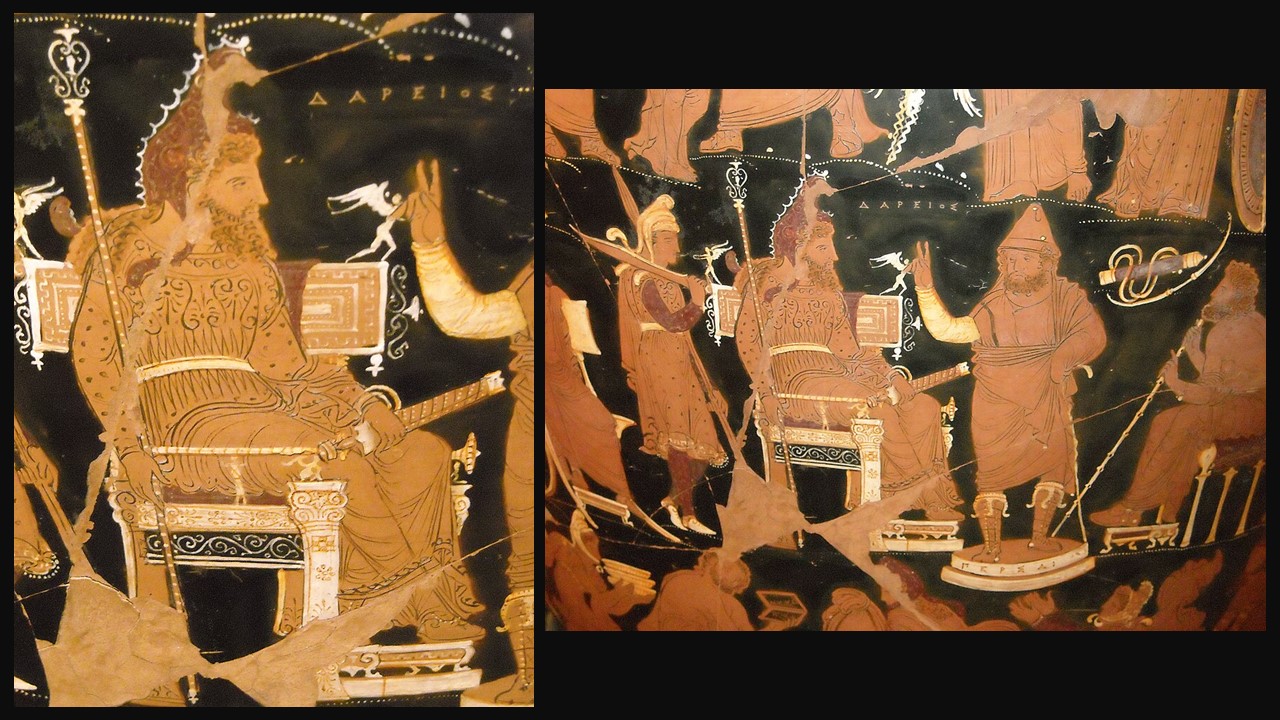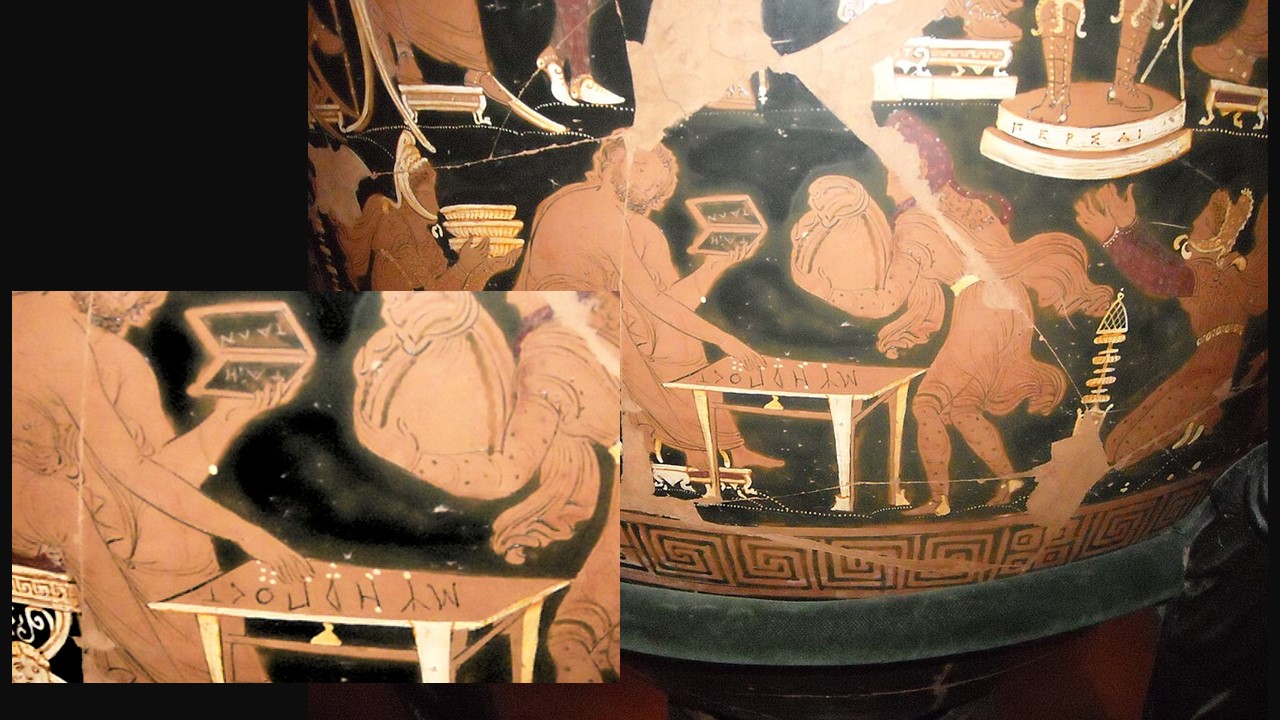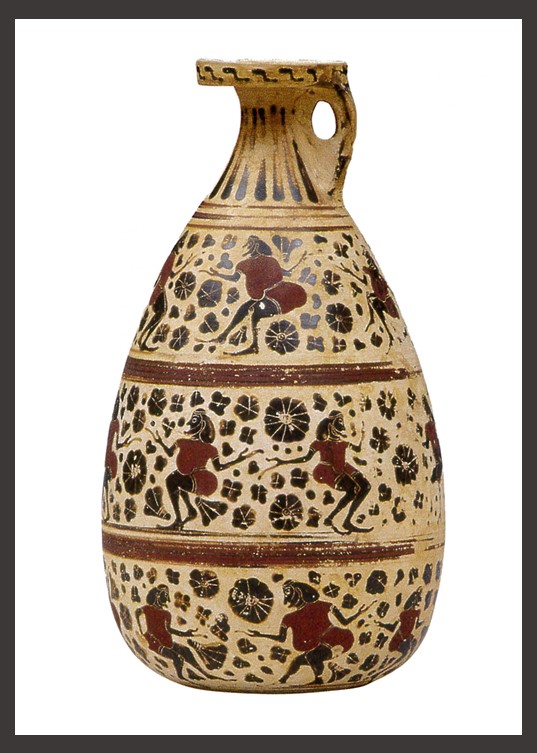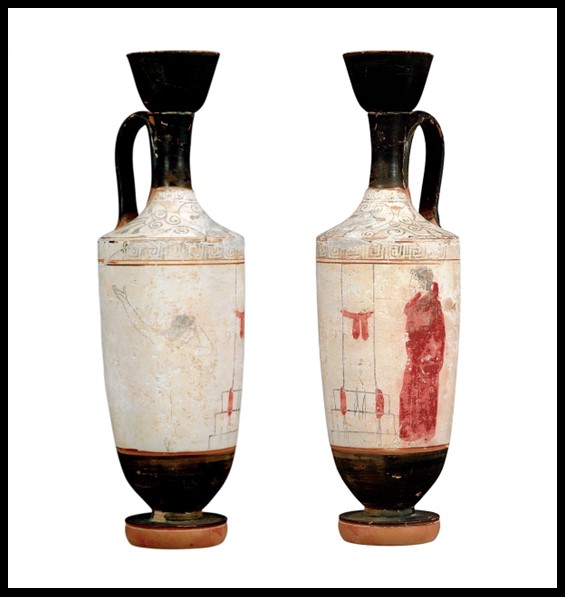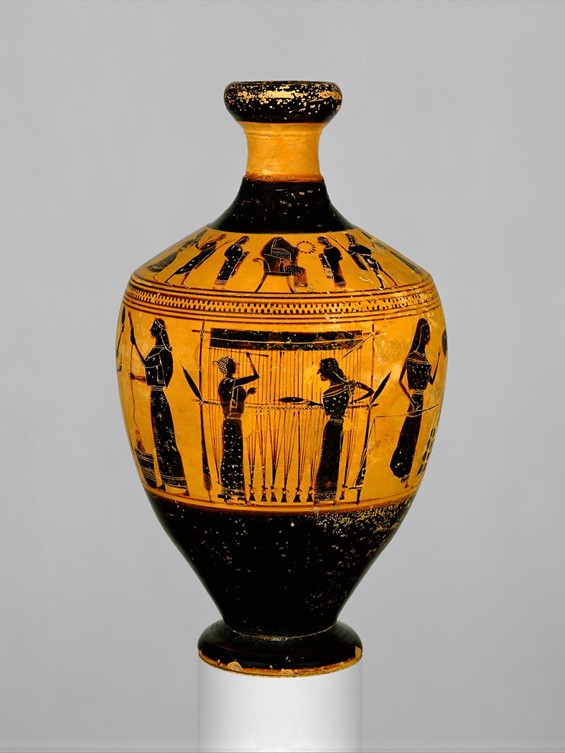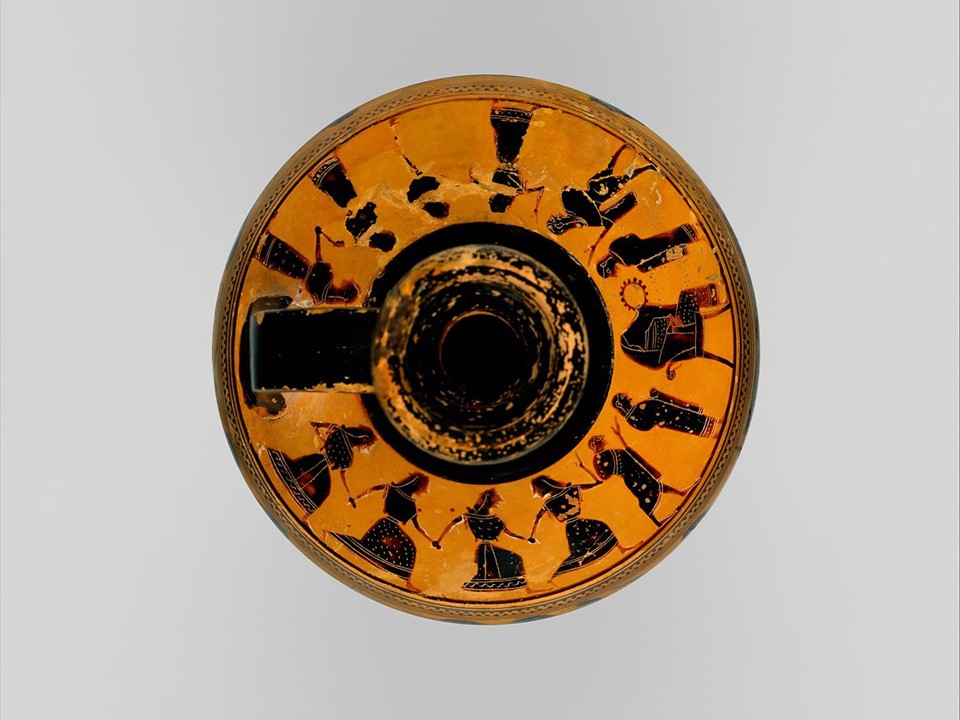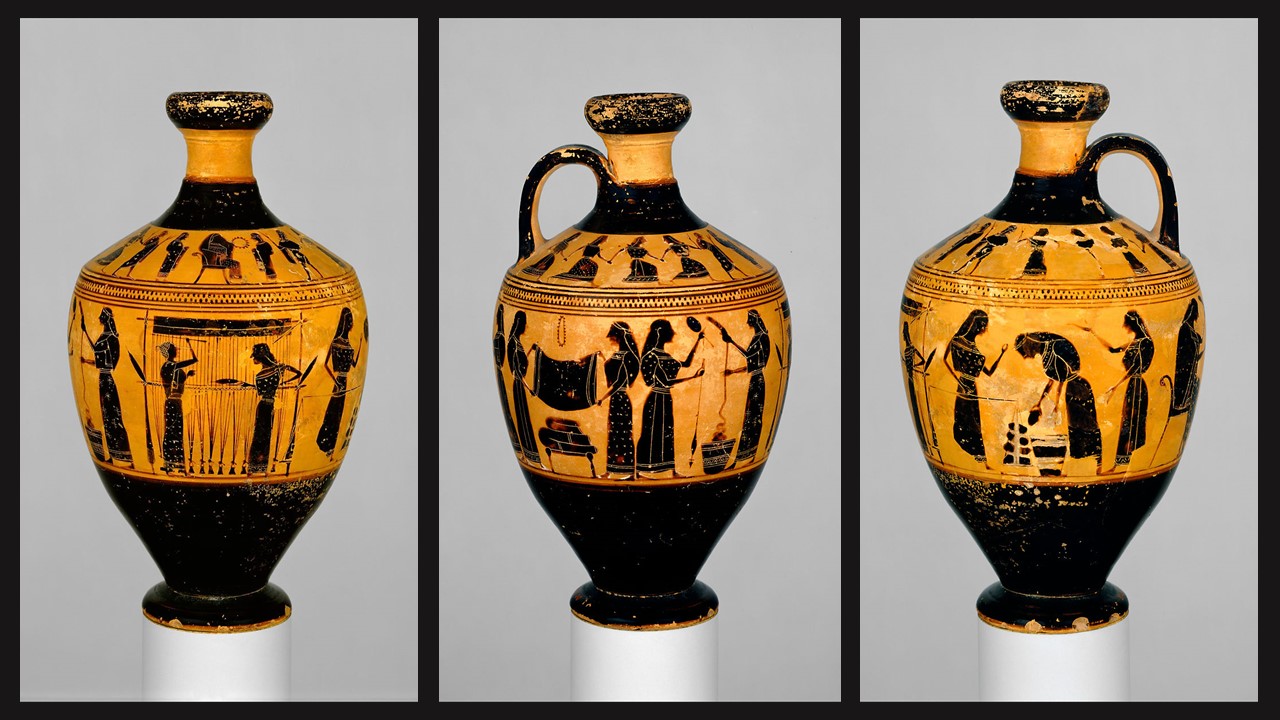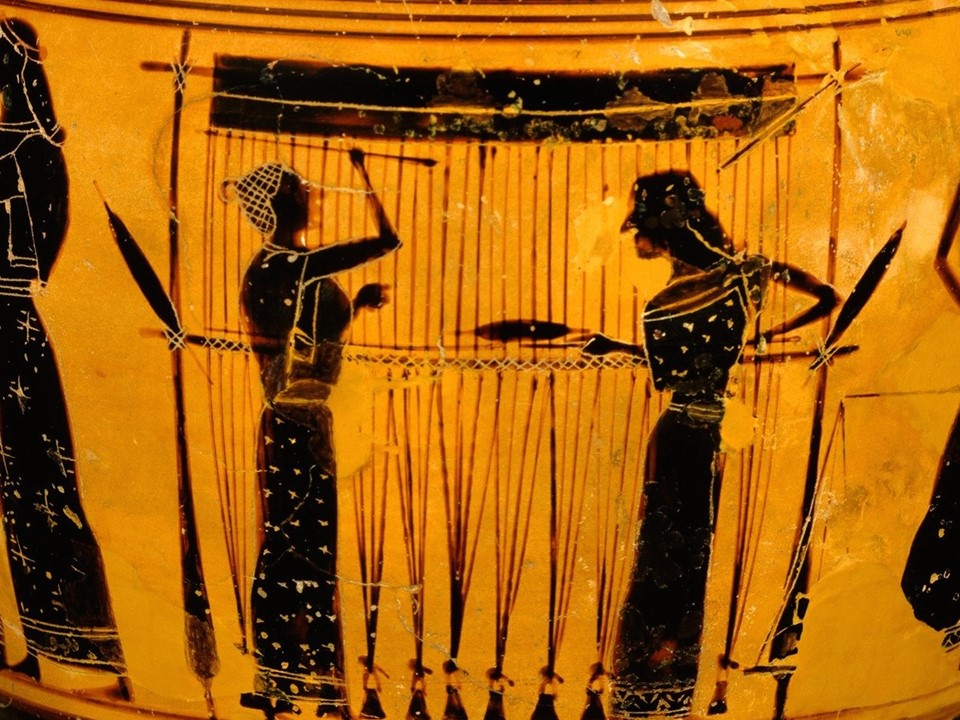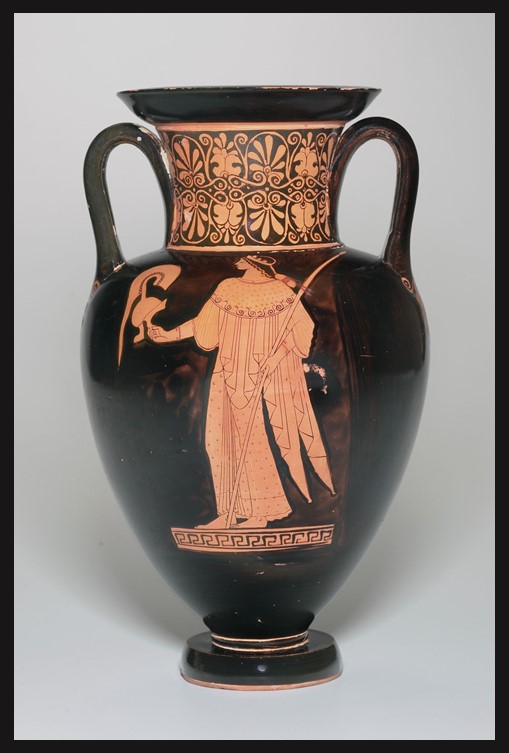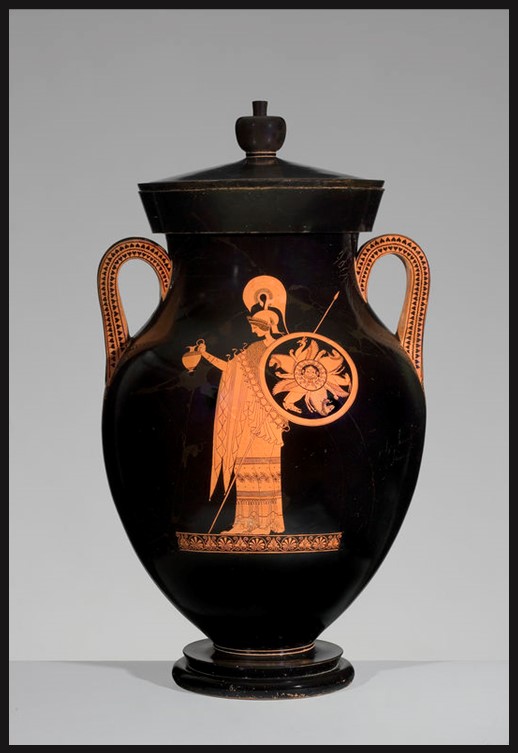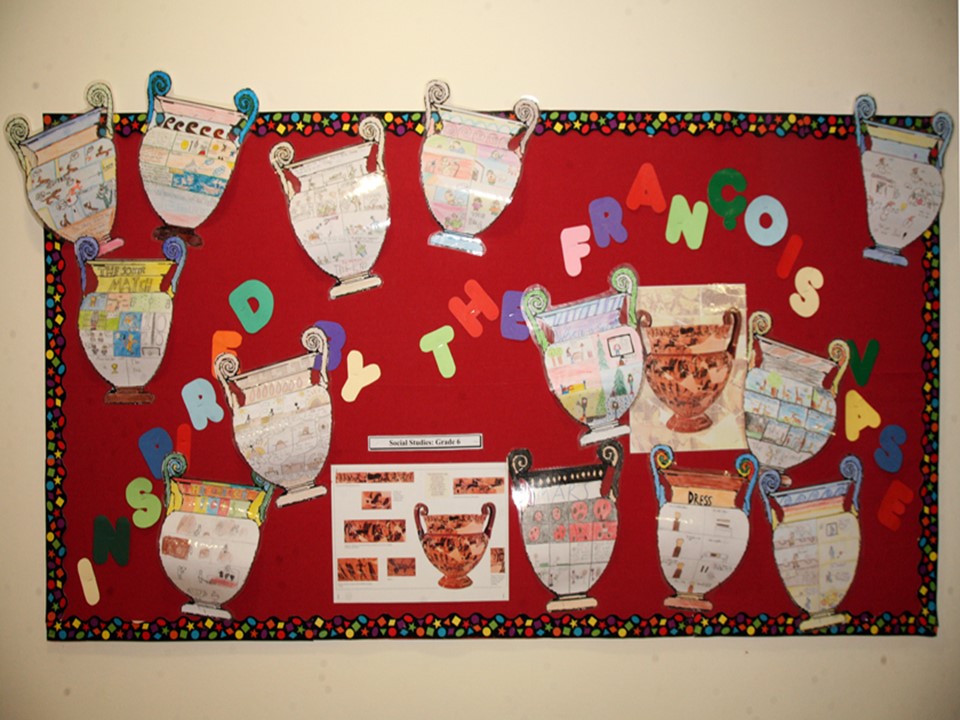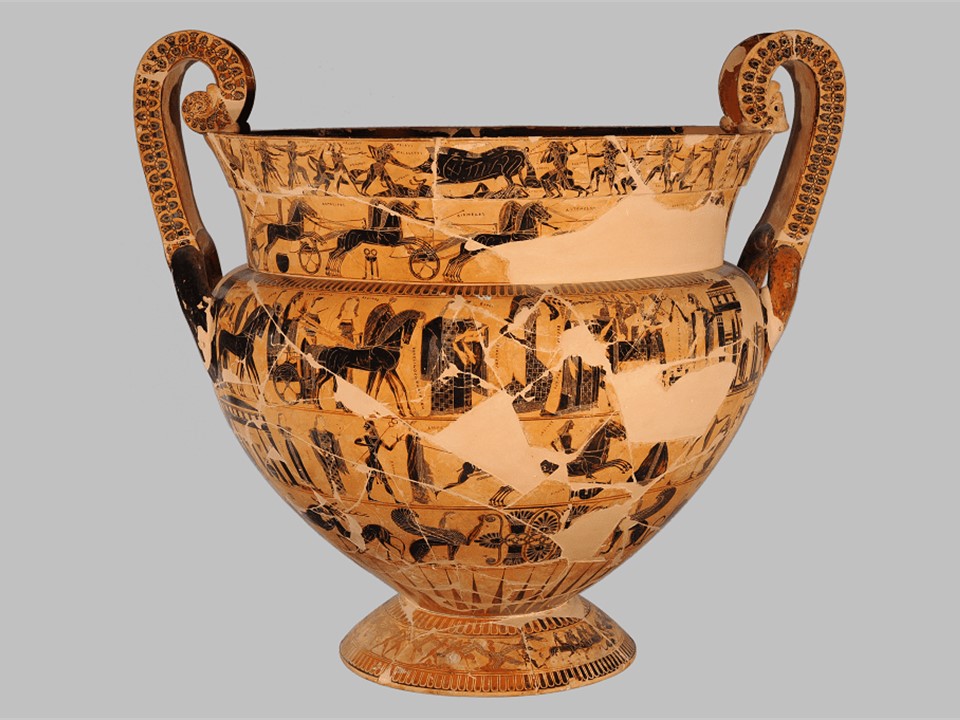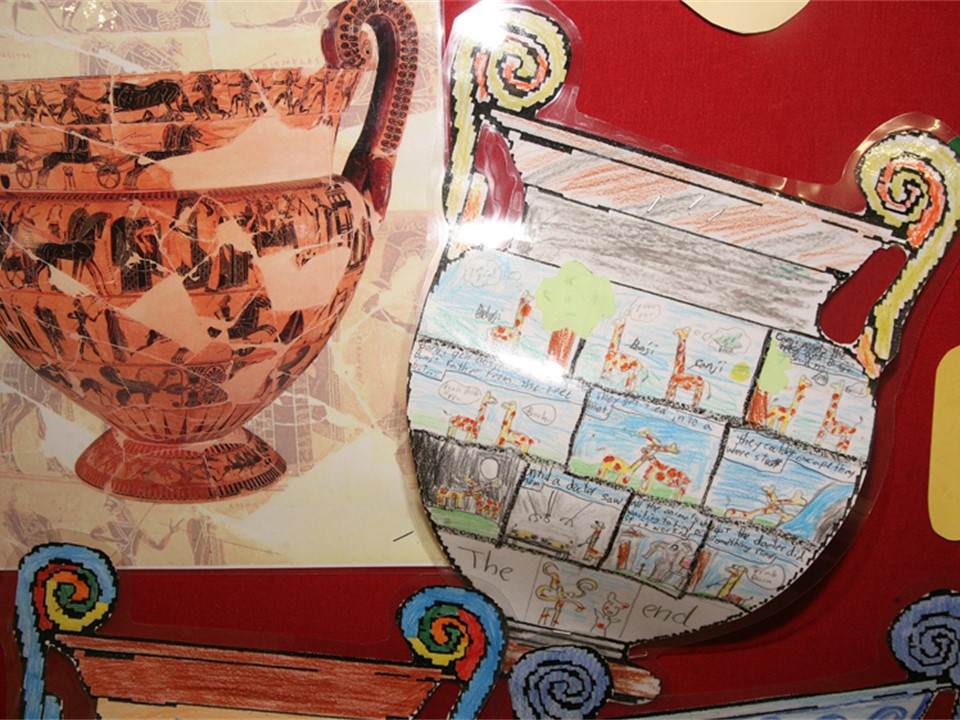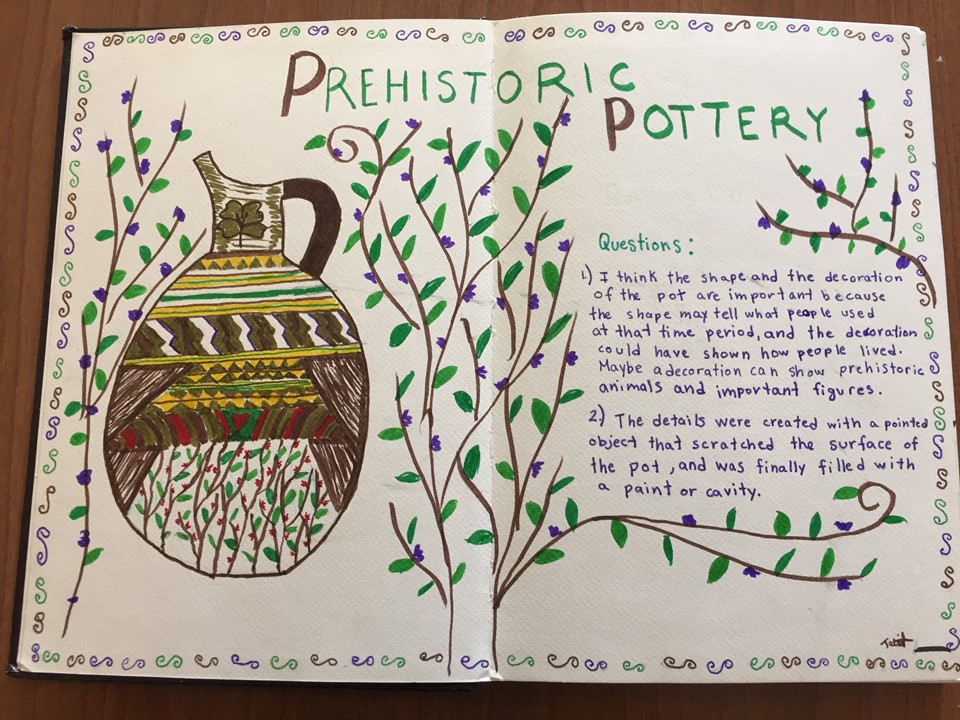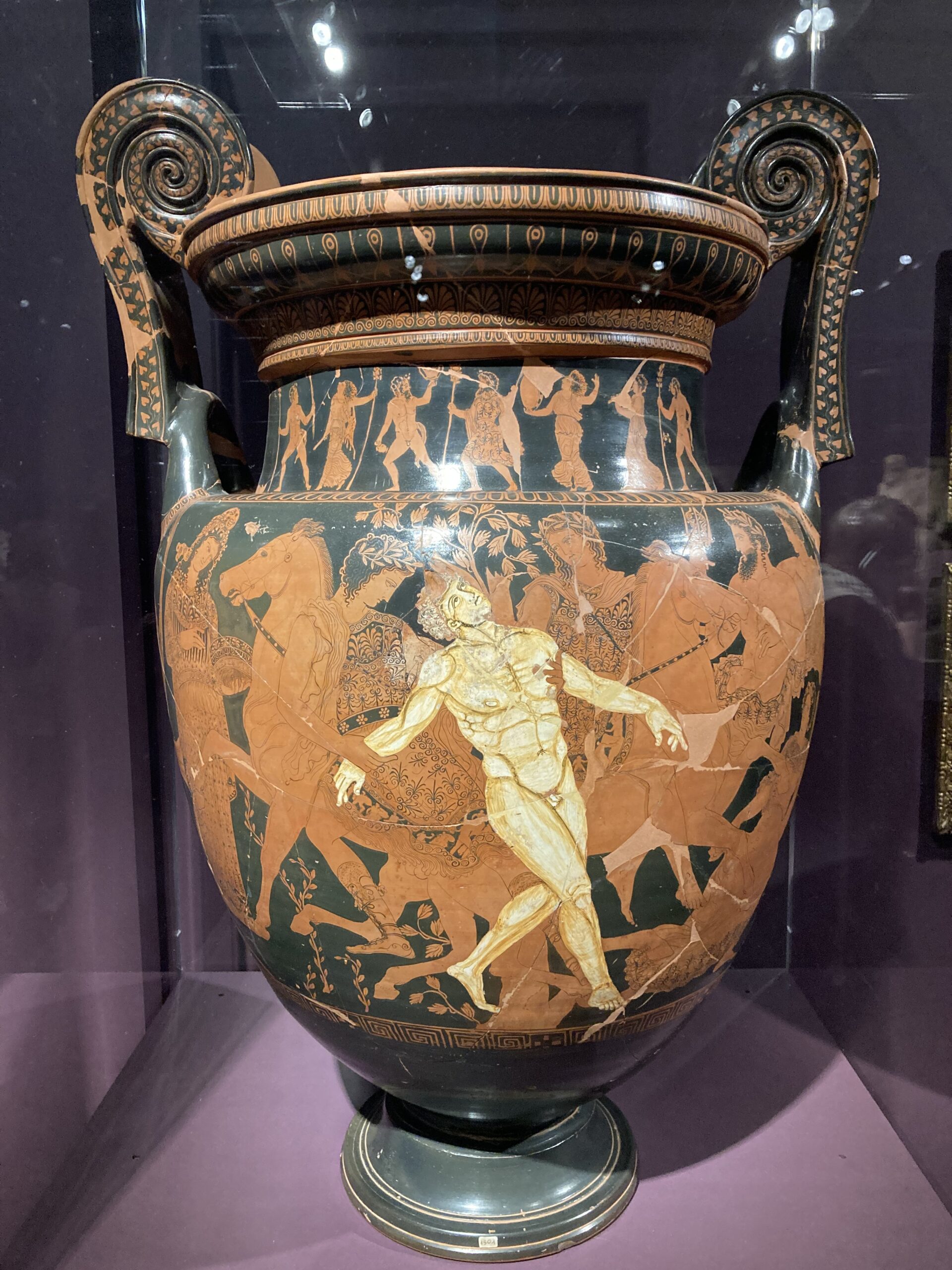
[1638] And Talos, the man of bronze, as he broke off rocks from the hard cliff, stayed them from fastening hawsers to the shore, when they came to the roadstead of Dicte’s haven. He was of the stock of bronze, of the men sprung from ash-trees, the last left among the sons of the gods; and the son of Cronos gave him to Europa to be the warder of Crete and to stride round the island thrice a day with his feet of bronze. Now in all the rest of his body and limbs was he fashioned of bronze and invulnerable; but beneath the sinew by his ankle was a blood-red vein; and this, with its issues of life and death, was covered by a thin skin… This is how Apollonius of Rhodes, the 3rd century BC Greek poet and scholar known for his epic poem Argonauticα‘—which recounts Jason and the Argonauts’ quest for the Golden Fleece—describes Talos, the ancient Greek automaton. https://www.theoi.com/Text/ApolloniusRhodius4.html
The myth of Talos, the man of bronze, is effectively depicted in the Talos Vase, a notable ancient Greek Volute Krater renowned for its intricate portrayal of the mythical Minoan giant. Dating back to the late fifth century B.C., and created by the so-called Talos Painter, this remarkable artefact was discovered in the necropolis of Ruvo in Apulia, Italy. Today, this significant piece is housed in the Museo Jatta in Ruvo di Puglia, where it remains an important work for the study of ancient Greek art and mythology.
The Talos Painter, a prominent figure of the ‘Rich Style’ in ancient Greek vase painting, was active during the late fifth century BC and early fourth century BC. His conventional name was assigned by J.D. Beazley due to his depiction of the mythical bronze giant Talos on the main side of the volute krater found in the necropolis of Ruvo in Apulia. Scholars suggest that he may have been a pupil of the Meidias Painter and worked, for a while, alongside the Modica Painter in the same workshop. The artist preferred decorating large vases, particularly craters and loutrophoroi, as well as Panathenaic amphorae, nuptial lebes, hydriae, and pelikes. His artistic identity is distinguished by his extensive use of shading, bold contour lines, and white colour, which successfully conveyed, for example, the bronze body of Talos in the Ruvo Krater. The grandeur of his designs, the richly decorated garments of depicted figures, and the indication of landscape in his compositions are elements that demonstrate the artist’s awareness of the achievements of large-scale painting, and his enthusiasm to incorporate them in his own dynamic compositions.
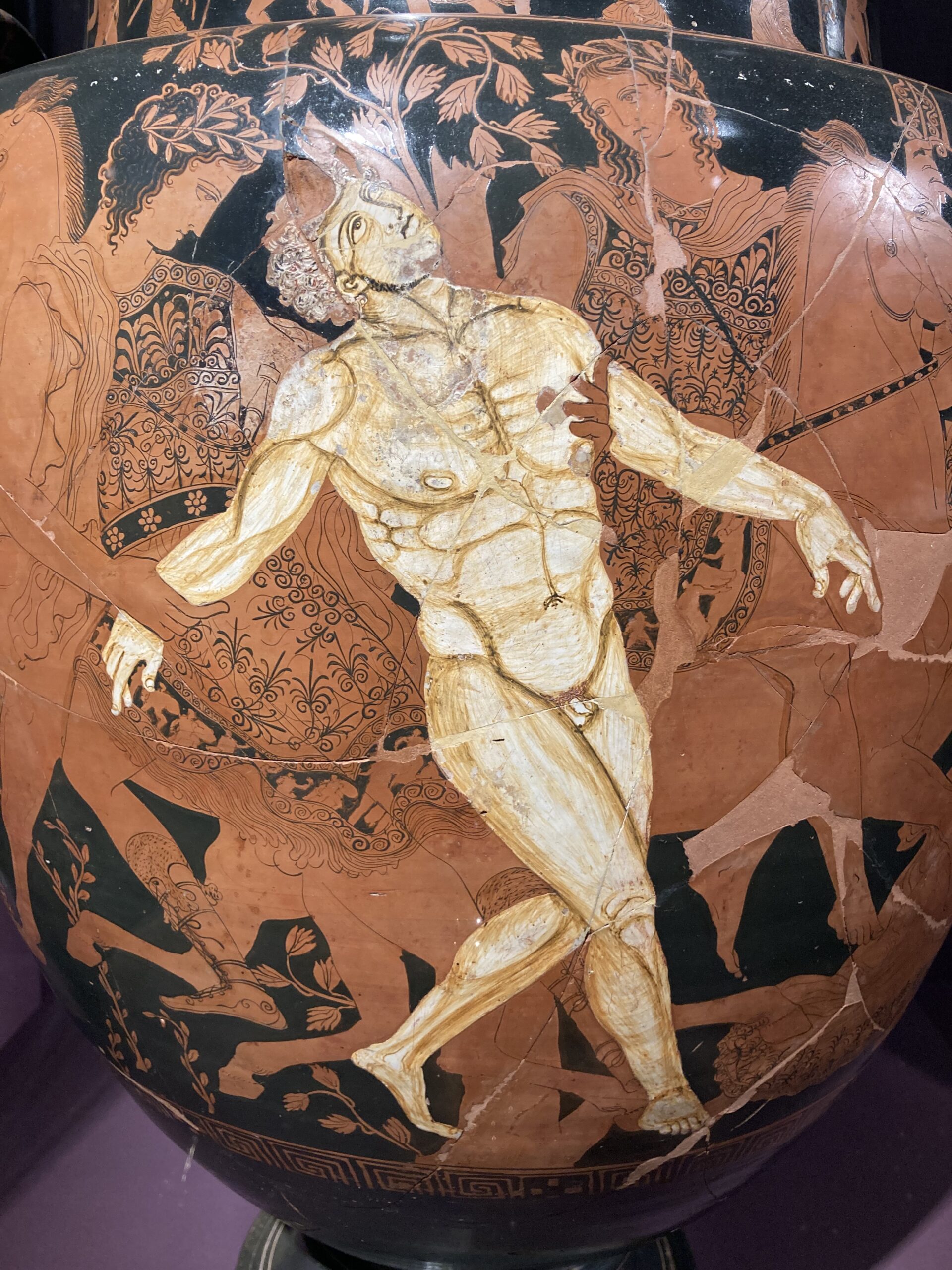
What is the specific decoration of the Talos Vase?
The Krater is adorned with intricate mythological scenes across its entire surface. On its main side, the central focus is the death of Talos, the mythical bronze giant. Talos stands at the center in a dynamic pose, arms outstretched, and legs crossed, as he powerlessly collapses. Rendered in white and yellowish hues, Talos, his muscular, bronze body beautifully rendered, is the striking protagonist of the scene. Behind Talos stands a tree trunk with sparse leaves, likely the sacred plane tree of Crete associated with Zeus and Europa’s myth. Flanking Talos are the Tyndaridae, Castor and Pollux, identifiable by inscriptions. Castor is mounted on horseback, while Pollux stands nearby, both depicted as youthful, beardless, wreathed, and beautifully dressed figures.
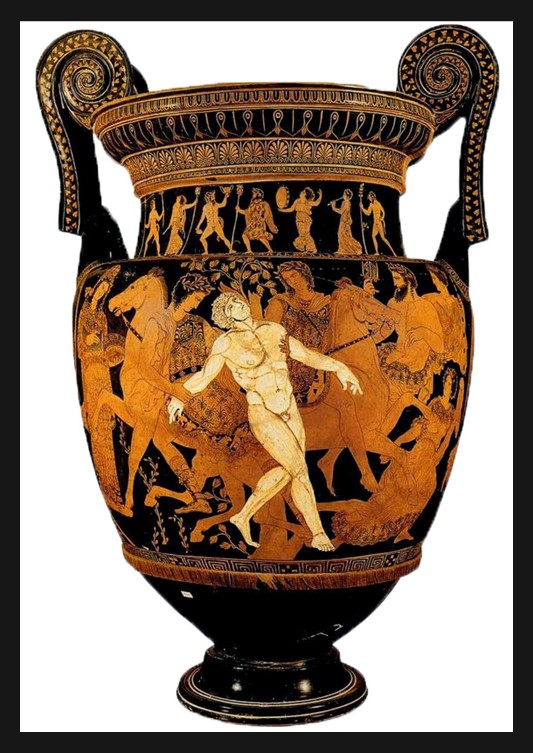
https://www.ancientworldmagazine.com/articles/talos-bronze-guardian/
At the rear of Pollux, the Greek painter presents a woman richly dressed in an oriental garment. She stands in a contrapposto stance, holding a sack, wreathed with ivy and wearing the Phrygian cap. She is identified as Medea, the sorceress, and she is placed in front of Argo, the boat of the Argonauts, out of which come Kalais and Zetes. At the far right, by Castor, Poseidon and his queen, Amphitrite, are presented observing the event, while on the lower right side of the composition a young girl, frightened and running away, is believed to be the personification of the island of Crete.
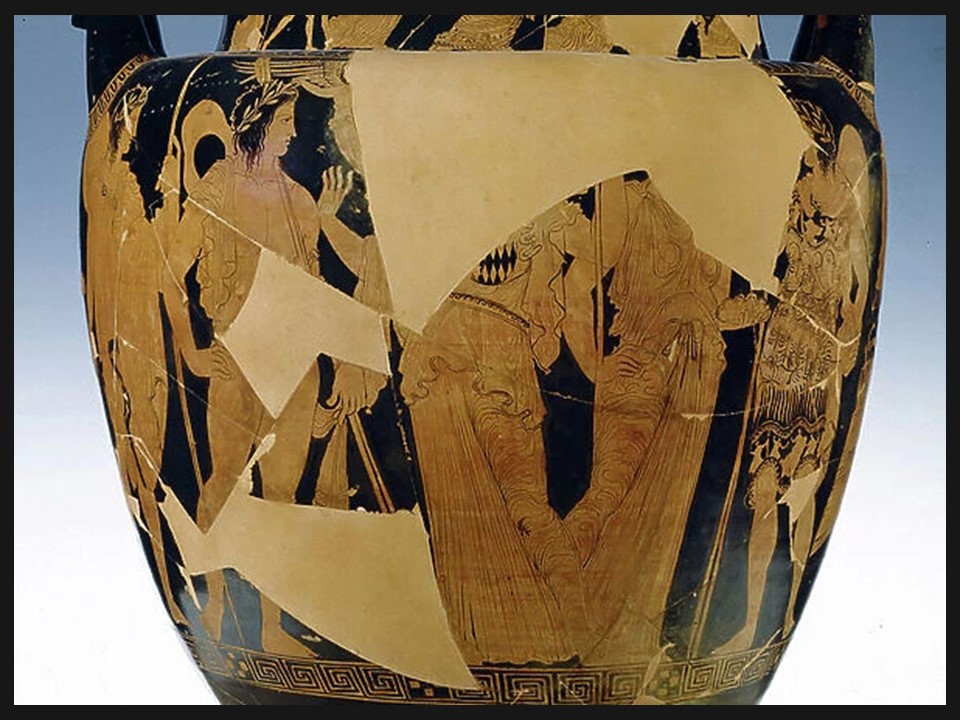
Side B of the Talos Vase, not as well preserved as that of Side A (the Death of Talos), presents an unidentified scene of 7 figures, with the winged goddess Nike, two male figures believed to be the Dioscuri, a second, smaller in size representation of Nike, goddess Athena, and a badly preserved, identified by name couple. Finally, the neck of the Krater, on both sides, is decorated with the God Dionysos and his lifeful companions.
For a Student Activity, inspired by the Myth of Talos, the ancient Greek automaton, please… Check HERE!
Bibliography: https://ikee.lib.auth.gr/record/124395/files/than.pdf (in Greek)
